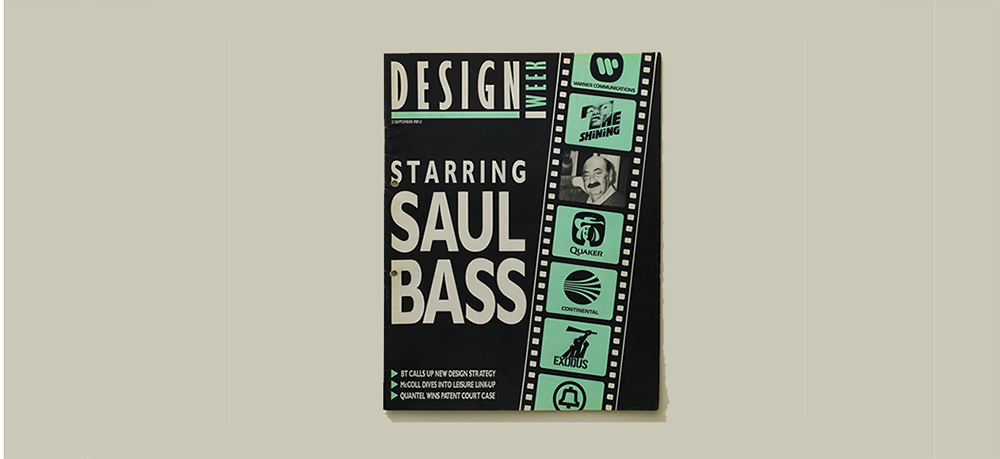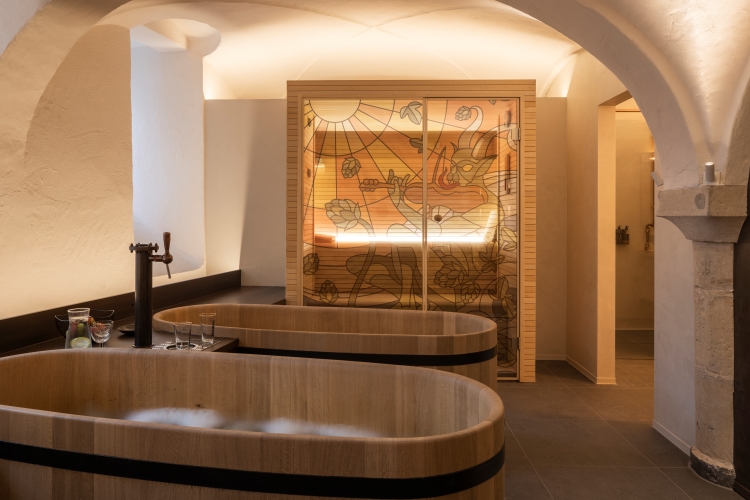London Design Biennale 2023 questions role of pavilions
The biennale addresses the global inequalities design is part of with international, cross-border and interdisciplinary exhibits responding to the theme of collaboration.
The fourth edition of the London Design Biennale (LDB) has opened, bringing together design projects and research from across the world to London’s Somerset House.
This is the first time that the Biennale has been curated by an institution, with the Het Nieuwe Instituut (HNI), and its general and artistic director Aric Chen. As Chen explains, the curation of the biennale has taken on some of the HNI’s current concerns, questioning the role of cultural institutions and design more widely.
“We as a sector can do more than raise issues, pose questions and be places of discussion and debate, but can actually enact some of the ideas”, he says.
For the 2023 biennale’s theme, The Global Game: Remapping Collaborations, Chen says that one of the inspirations was R. Buckminster Fuller’s World Game of the 1960s, which posed that ideas on a global scale and systems approach was necessary to tackle the problems humanity faced. The goal was, as the Buckminster Fuller Institute states: “Make the world work, for 100% of humanity, in the shortest possible time, through spontaneous cooperation, without ecological offense or the disadvantage of anyone.”
“More ambivalently” says Chen, the theme also refers to the 19th century “Great Game”, referring to the rivalry between British and Russian Empires over influence in Asia, “which many people see as returning today”, he says.
In relation to the second half of the title, remapping collaborations, Chen tackled the question of whether national pavilions were relevant in the present day.
“I’m old enough and have been to enough biennales to remember a time when a lot of people were questioning this whole idea of having national pavilions”, Chen says. Mentioning a period where many celebrated globalisation and the freer movement of people, ideas and goods. “Needless to say that’s no longer the case”, he adds.
This LDB, he says, becomes a “testing ground” for reconsidering how design can function on a local and global scale: “a kind of trial, a microcosm for seeing how design can create an alternative geopolitical landscape, driven not by competition and conflict, but instead cooperation”.
Making this into a game – and a functional part of the Biennale – HNI commissioned Amsterdam-based studio Play the City to create a “dating app” where exhibitors can create profiles with the hope of making connections for future collaborations.
Materials and resources
Taiwan’s pavilion, Visible Shop: Parts without cover, positions itself as a global shop complete with exhibitors wearing aprons. The pavilion considers Taiwan’s place as a small country intricately woven into global supply chains thanks to its rich natural resources and technological capabilities, and its geographical position between Northeast and Southeast Asia.

Additional facts displayed around the pavilion edges claim Taiwan as a nation of shopkeepers with the highest density of convenience stores in the world: “In the capital city of Taipei, there is a convenience store every 300 metres or so”, it states.
As a trade hub, Taiwan provides lots of small, but essential components for a wide range of products, while also hosting particular industries – being host to “the largest bicycle industry supply chain, with brands, assembly factories, and component factories all within a one-hour drive, forming an efficient industrial cluster”, the text adds.
Austria’s pavilion, Brot: Baking the Future, looks at bread from every design angle imaginable. It considers the industrial systems that make and produce bread for people across the world – and the power contained within these systems – but also on show are versions (stippled and sculpted wooden versions) of the traditional tools of breadmaking, displayed as elegant design objects. With a focus on the sensory – with workshops for visitors happening throughout – bread is available for making, eating, and smelling at the pavilion. A series of sketches, meanwhile, imagine different speculative bread-based societies, such as one motivated by self-improvement, with psychedelics incorporated into the bread, and kneading as a form of exercise.

Interdisciplinary group Automorph Network has brought together scientists and designers for the Creative Differences pavilion, which looks to give agency to the materials used – rather than simply using them. This can mean using a material’s natural abilities and technologies such as the way a particular seed pod uncurls with a drop of moisture, screwing itself into the ground.
Collaborations across borders
A collaborative Spanish and Peruvian pavilion, titled Common Vibrations, uses the cajón – a musical instrument in the form of a percussive box that you sit on – to explore design and its relation to migratory movements. The curator, Covadonga Blasco Veganzones, explains that the instrument was introduced to Peru through African slaves, who, without possessions or musical instruments, improvised with common objects around them such as crates and boxes. The pavilion features the cajóns, the crate they arrived at the biennale in repurposed as a plinth, and videos showing the instruments played by Afro-Peruvian Criolla and Spanish flamenco musicians.
The Polish pavilion focuses on a “crisis collaboration” with its neighbour Ukraine, as a humanitarian response to the war. Titled Poetics of Necessity, the project, by Poland’s Adam Mickiewicz Institute, sources discarded windows to send to Ukraine. On display in London are windows newly sourced from London, which will be transported to Ukraine after the Biennale; examples of “punk approaches” to installing the windows, says curator Zofia Jaworowksa, and an open-source guide available in Ukrainian, instructing users on solutions for fitting windows of different sizes.

While responding to the specific and urgent situation of the war in Ukraine, and the fact that windows are the first thing to be damaged in wartime, it also speaks to wider conversations about how we use and reuse the resources available to us, she says.
In addition to the overall artistic direction of the Biennale, HNI also worked on the Dutch pavilion, Out of Joint, with curator Colin Keays. This pavilion, shaped around the idea of “social disorientation”, is designed to be picked up and dispersed throughout the biennale as required, offering ambiguous items of furniture – filing cabinets and waiting room-like benches, complete with magazines – repurposed for impromptu events by other exhibitors.
Eureka exhibition
This year the Biennale also has Eureka, a showcase of design research from across UK universities which “explores areas from aging to the UK’s industrial legacies” says LDB director Victoria Broackes.
The projects and displays vary greatly in both content and approach. Canterbury Christ Church University presents Arcade Britannia, telling the design history of the games arcade; while Kingston University displays, The Garden, looking at the idealised images of flora and foliage in more than 150 years of the Scottish Stoddard Templeton carpet design – archive along with a 3D animation of the industrial ‘spool’ loom used to weave them. In an exhibition titled Seeking Connection, teams from Kings College London present projects ranging from examining loneliness in older adults; a “sad room” that you can interact with via a chat window; and the Purrble, a cat-like toy designed for children tackling mental health issues, which users are invited to try and soothe to in turn calm themselves down.

Lab4Living at Sheffield Hallam University (SHU) showcased its work designing for an ageing population, based around the ONS’s statement that 1 in 3 people in the West can now expect to live to 100. Rather than displaying the products the group has designed, however, the display looked instead at the process of working with multiple stakeholders to find design solutions to complex problems, explains SHU Professor Paul Chamberlain. A large video screen running multiple videos simultaneously represents the competing views to take into account in such work, requiring visitors to press a number of buttons to home in on the stories one-by-one.
Forum and public programme
Broackes explains that the public programme is also an important part of this edition of the Biennale. Taking place throughout the month are a variety of events including the Biennale Forum on Tuesdays, including the 6, 13 and 20 June. The opening keynote is from architect Shigeru Ban, talking about his ongoing projects creating easy-to-install shelters for humanitarian emergencies. His Paper Partition System is used to create the Humanitarian Pavilion this year, which is a collaboration between Ban, Ukrainian composer Valentin Silvestrov, and also features a collection of Ukrainian poetry and testimony from Ukrainian citizens.
Should visitors want to try a design-led game themselves, on Wednesdays is a session called “The Future for Beginners”. The game invites 30 players to work together to “transform a quiet peninsula into a world-famous cultural hub in the face of escalating climate shocks”.
London Design Biennale takes place from 1 – 25 June 2023 at Somerset House, Strand, London WC2R 1LA.
Banner Image: Malta’s pavilion in the courtyard of Somerset House. All installation images by Taran Wilkhu.
-
Post a comment





